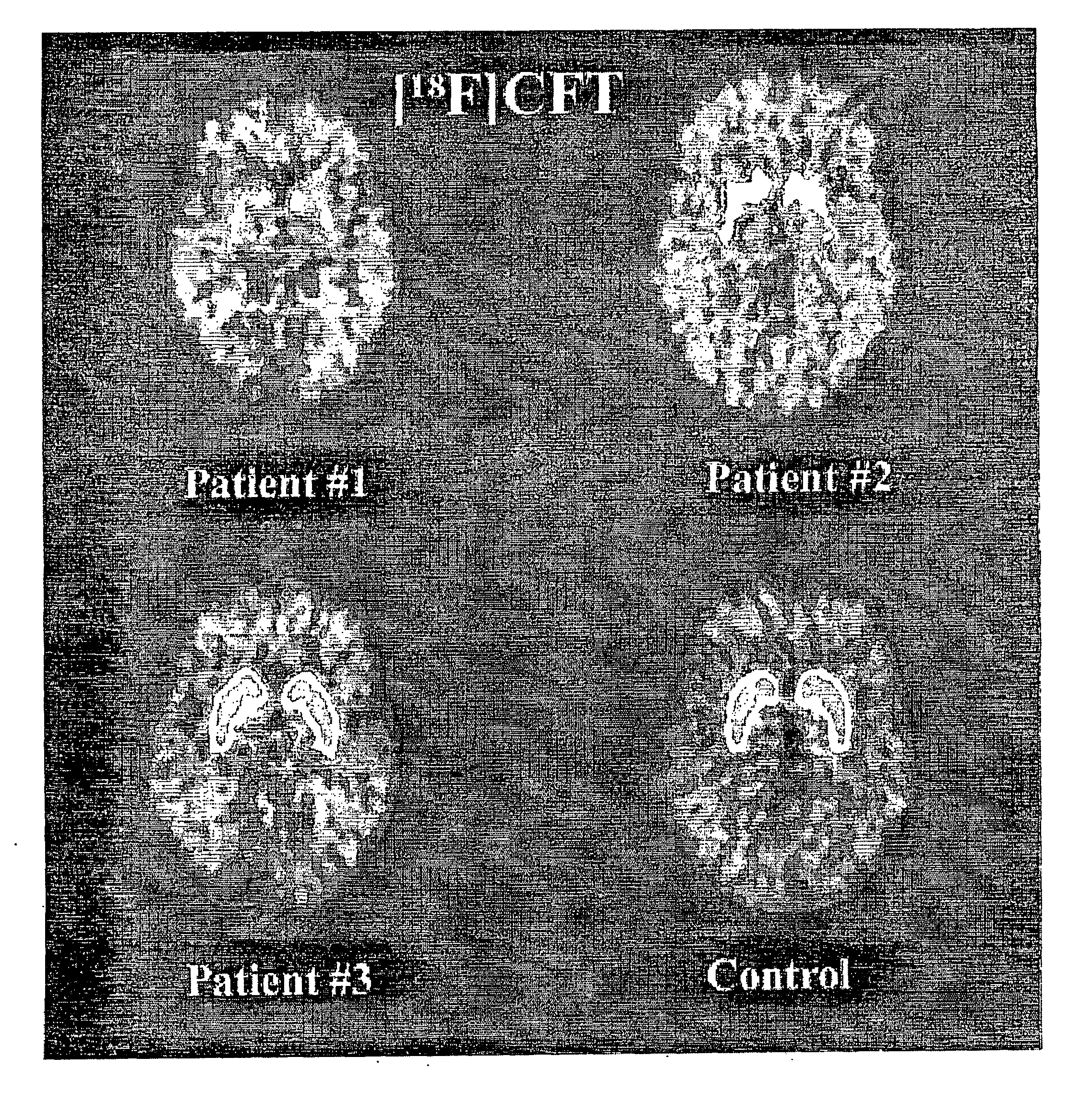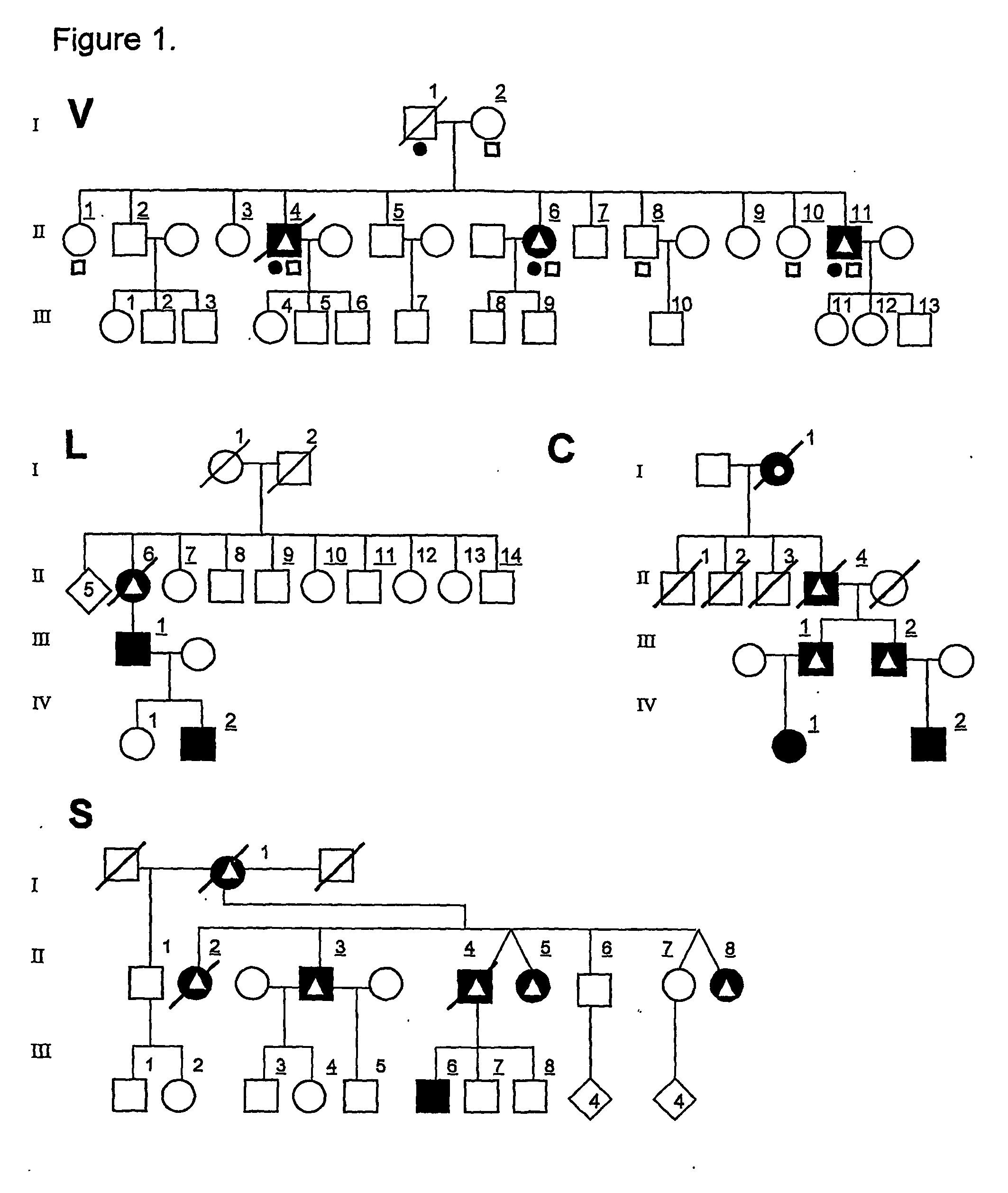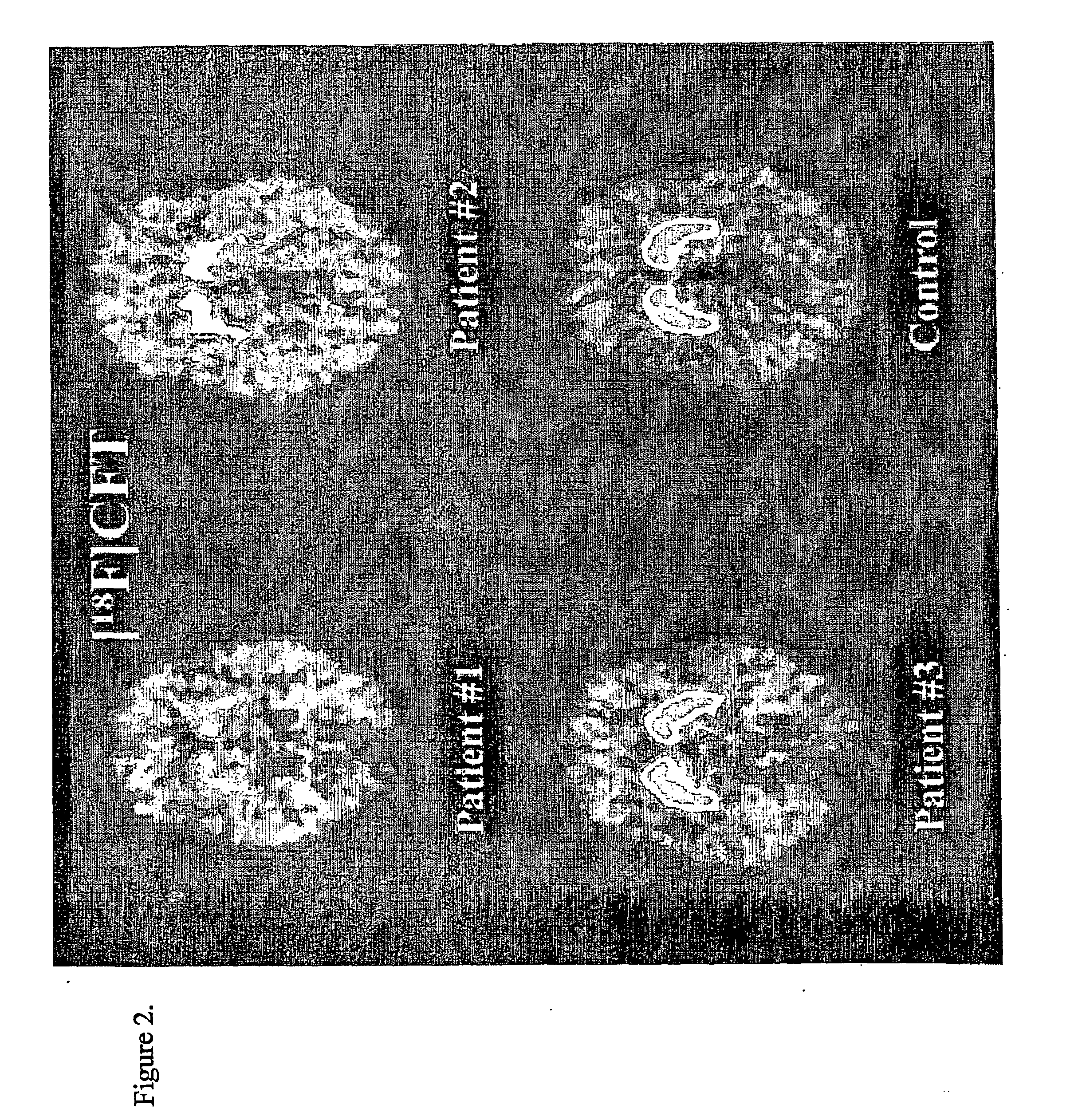Diagnosis and Prediction of Parkinson's Disease
a parkinson's disease and diagnosis technology, applied in the field of diagnosis and prediction, can solve problems such as different studies, mitochondrial dysfunction, and decreased enzyme activity, and achieve the effects of treatment, and improving the accuracy of diagnosis
- Summary
- Abstract
- Description
- Claims
- Application Information
AI Technical Summary
Benefits of technology
Problems solved by technology
Method used
Image
Examples
example
[0113]FIG. 1 illustrates the pedigrees used in the studies. In FIG. 1 open symbols are for healthy family members, filled symbols for persons with PEO, filled symbols with white triangle for subjects with PEO and PD, filled symbols with white circle for subjects with PEO, but with no information available for PD. In case of family V, small circle indicates pol mutation in POLG1 and small square indicates exo mutation. Our material consisted of one British (Family C, Chalmers et al. (1996), supra) and one Swedish (Family S, Lundberg (1962) Acta Neurol Scand 38:142-155 and Melberg et al. (1996) Muscle Nerve 19:1561-1569) adPEO family, whose clinical details have been previously described, as well as two Finnish families, one with dominant (family L) and one with recessive pattern (family V) of inheritance. All the studies have been done according to the Helsinki Declaration, and with informed consent. Table 1 summarizes the clinical details of the patients in question, with special em...
PUM
| Property | Measurement | Unit |
|---|---|---|
| Size | aaaaa | aaaaa |
Abstract
Description
Claims
Application Information
 Login to View More
Login to View More - R&D
- Intellectual Property
- Life Sciences
- Materials
- Tech Scout
- Unparalleled Data Quality
- Higher Quality Content
- 60% Fewer Hallucinations
Browse by: Latest US Patents, China's latest patents, Technical Efficacy Thesaurus, Application Domain, Technology Topic, Popular Technical Reports.
© 2025 PatSnap. All rights reserved.Legal|Privacy policy|Modern Slavery Act Transparency Statement|Sitemap|About US| Contact US: help@patsnap.com



